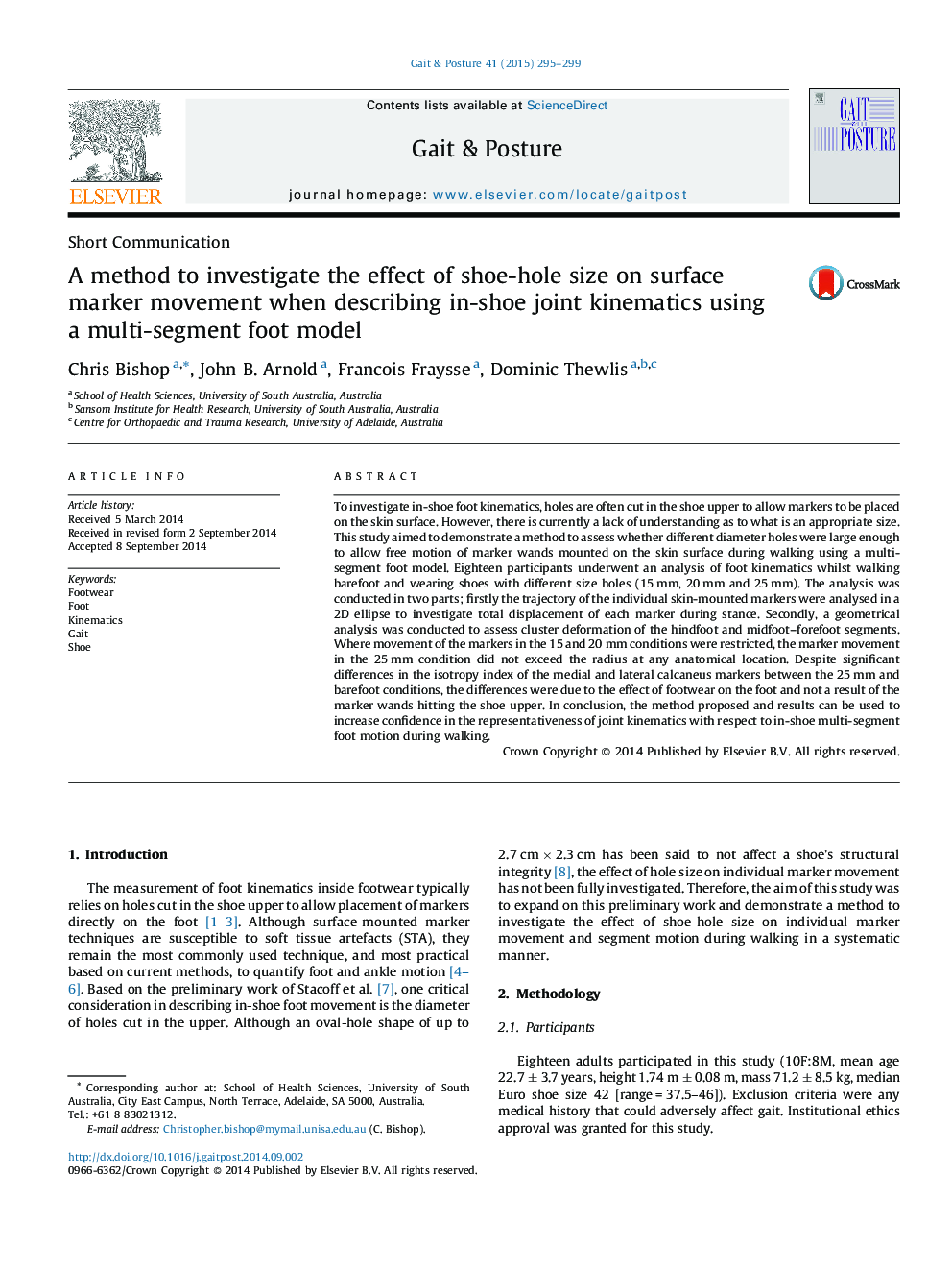| کد مقاله | کد نشریه | سال انتشار | مقاله انگلیسی | نسخه تمام متن |
|---|---|---|---|---|
| 6205747 | 1265627 | 2015 | 5 صفحه PDF | دانلود رایگان |
- This study used a novel method to assess the effect of shoe holes on marker motion during walking.
- Researchers must consider the effect of shoe hole size on both individual marker and cluster motion.
- Smaller hole sizes can impede free motion of the marker wand attached to the skin during walking.
To investigate in-shoe foot kinematics, holes are often cut in the shoe upper to allow markers to be placed on the skin surface. However, there is currently a lack of understanding as to what is an appropriate size. This study aimed to demonstrate a method to assess whether different diameter holes were large enough to allow free motion of marker wands mounted on the skin surface during walking using a multi-segment foot model. Eighteen participants underwent an analysis of foot kinematics whilst walking barefoot and wearing shoes with different size holes (15Â mm, 20Â mm and 25Â mm). The analysis was conducted in two parts; firstly the trajectory of the individual skin-mounted markers were analysed in a 2D ellipse to investigate total displacement of each marker during stance. Secondly, a geometrical analysis was conducted to assess cluster deformation of the hindfoot and midfoot-forefoot segments. Where movement of the markers in the 15 and 20Â mm conditions were restricted, the marker movement in the 25Â mm condition did not exceed the radius at any anatomical location. Despite significant differences in the isotropy index of the medial and lateral calcaneus markers between the 25Â mm and barefoot conditions, the differences were due to the effect of footwear on the foot and not a result of the marker wands hitting the shoe upper. In conclusion, the method proposed and results can be used to increase confidence in the representativeness of joint kinematics with respect to in-shoe multi-segment foot motion during walking.
Journal: Gait & Posture - Volume 41, Issue 1, January 2015, Pages 295-299
